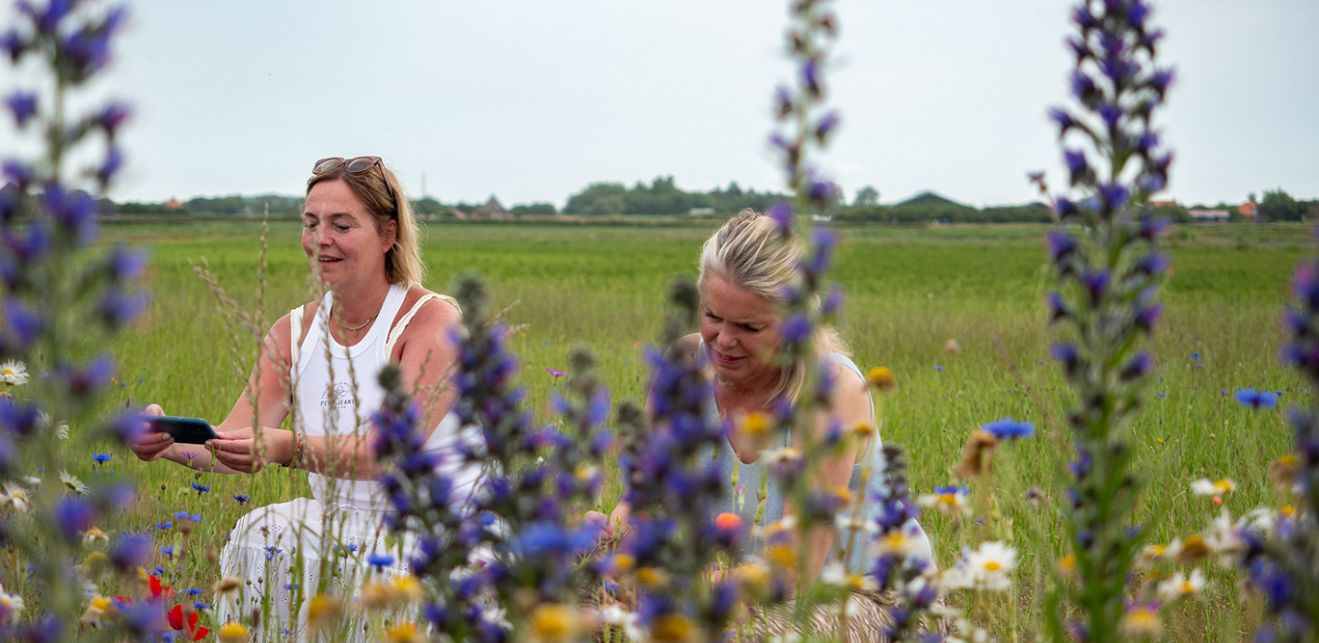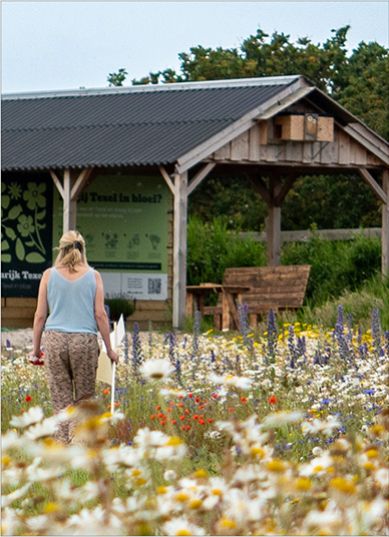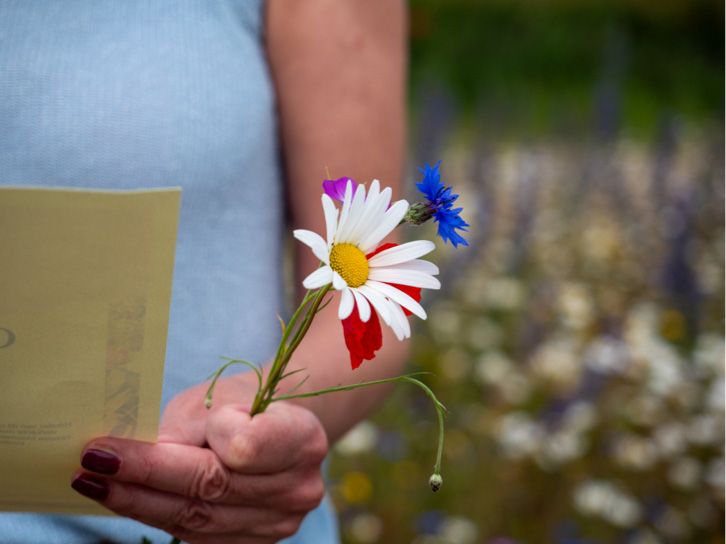Biodiversity

A new lease of life for biodiversity
A new lease of life for biodiversity
Biodiversity in the Netherlands is in a sorry state. Texel is no exception. Its butterfly, bee and insect populations are in decline, yet nobody can agree on why. Could it be monoculture that limits the types of crops farmers grow on each plot? Our use of pesticides and artificial fertilisers? Climate change? Whatever the reason, our insect populations are suffering: they’ve dropped by 75% in 30 years. Even the iconic European dark bee, sighted on Texel for the past 100 years, is now endangered. We won’t wait until it’s too late. Time for action!
Our wildflower meadow is a step in the right direction. We’re sowing seeds of native flowers specifically to attract butterflies and bees, like cornflower and poppies, which have just the right amount of nectar for our beloved European dark bee. Our work also helps to stimulate soil life. Want to do your bit?
Step by step
from seed to meadow
Preparing the land
Our plot of land is in a spectacular corner of Den Hoorn, where dunes, forest, fields and a nature reserve meet. It’s also two metres lower than the roadside, so that the meadow appears to stretch out from underneath you. We currently have 25,000 square metres of land to use. Come visit!
Sowing
February is when it all kicks off! We’ll buy seeds 30 varieties of annuals and perennials and prepare the land. IVN, the Dutch foundation committed to teaching children and adults about nature, has compiled a special mix of native Texel flowers just for us. In March, we’ll place the seeds in our machine’s storage tank and start sowing. We only need two kilos for every 1,000 square metres! We’re hoping for a bit of rain after sowing, so that the seeds don’t dry out.
Care
Once the seeds have been sown, all that’s left to do is wait. Our sandy soils can whip up a lot of dust, so we’ll have to keep an eye open to make sure the seeds don’t blow away. As we believe in the power of nature, we won’t intervene unless we have to and won’t use any fertiliser (artificial or otherwise). If luck is on our side, the first seedlings should germinate in April. They’ll be fragile and could get damaged by wind and rain. We hope they’re robust enough to grow into a lush wildflowers.

Flowering
The flowers will be in bloom from May to August. Sign up to our newsletter to find out more! Again, we won’t intervene unless we really have to. The meadow will slowly transition from blues to yellows, reds, purples and then whites. It’s a sight to behold and hear – listen to all those insects buzzing! Join a tour on an open field day or head over to the pick-your-own garden, full of plants and flowers. If you’ve adopted a plot, you can harvest a bunch of flowers.
Winter jobs
All flowers will be spent by September. We’ll use a shear mower to cut the grass in a way that protects the ecosystem. The cut grass will be left in situ for a couple of weeks, so that the seeds have time to fall out of their seedheads. After that, we’ll rake and remove the cut grass. Over winter, we’ll perform maintenance on the drainage system and mow the edges of the ditches. In February, we’ll sow perennials on new patches of meadow, just like on the rest of the plot. The circle of life is complete!
Do your bit
Adopt one metre square (or more!) of meadow on Texel and support our plucky pollinators.
Do your bit
Buy a seed packet and plant your own flowers at home. Follow the instructions and watch your colourful flowers spring into life.

Hoo-hoo’s there?
Next to the wildflower meadow is a hut with a sheltered picnic table, providing a bit of luxury among the nature. Take a seat, and you may be joined by a barn owl! As we want to keep our hut nice and tidy (free of bird droppings), we’ve fashioned an owl box with materials from Werkgroep Kerkuil Texel, a local barn owl interest group. Let’s hope the owl makes a nest here rather than in the hut...



